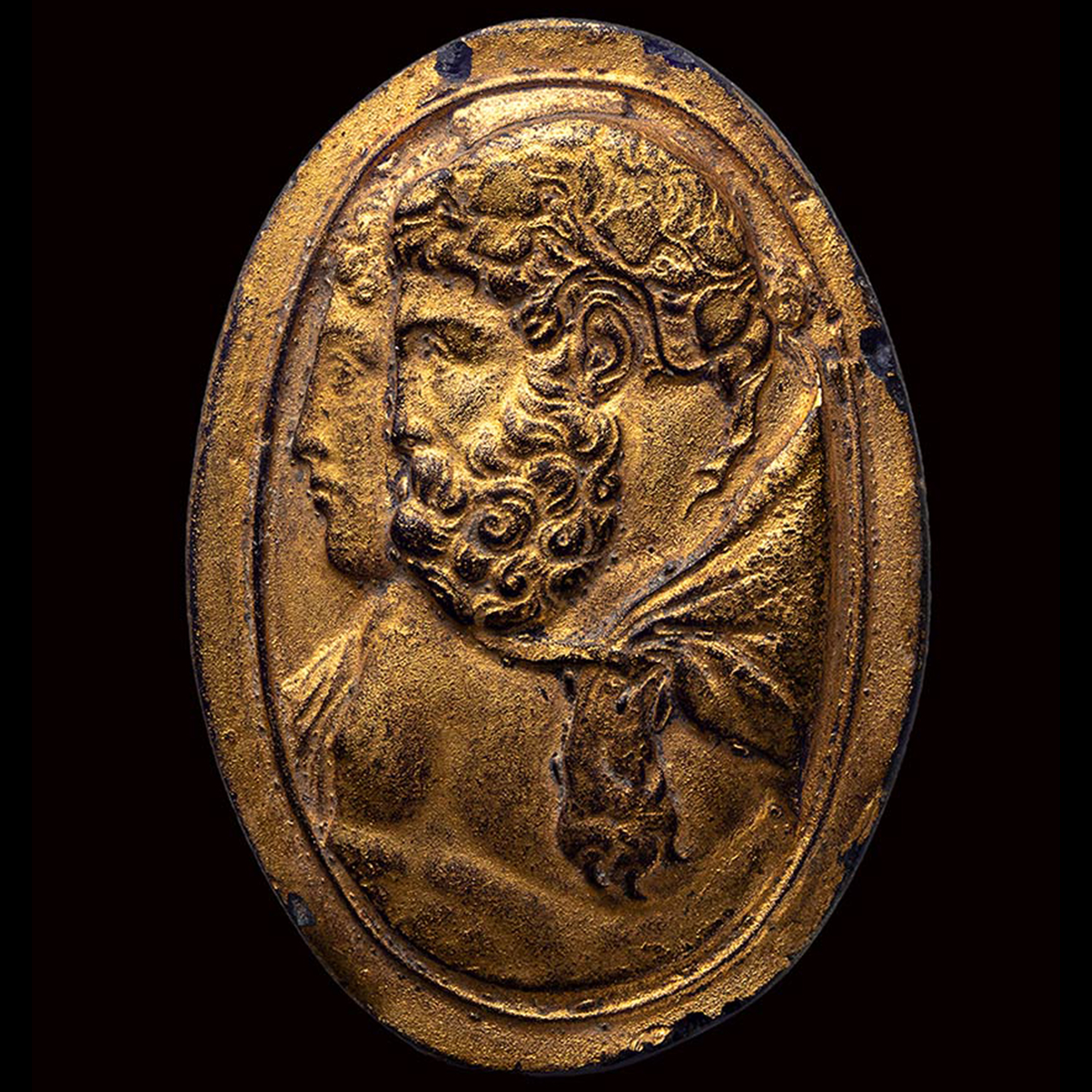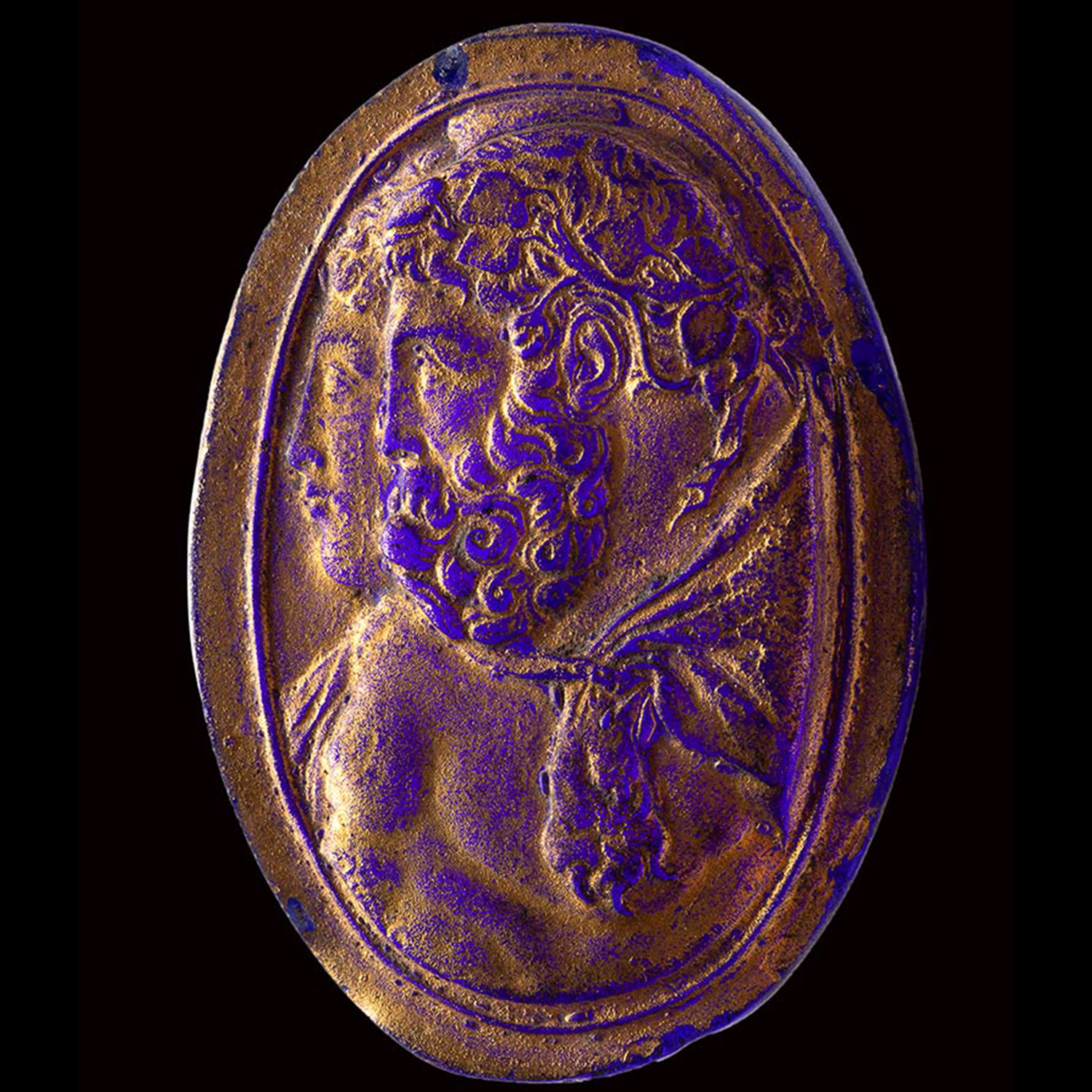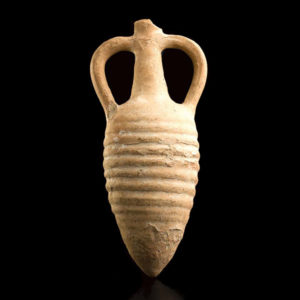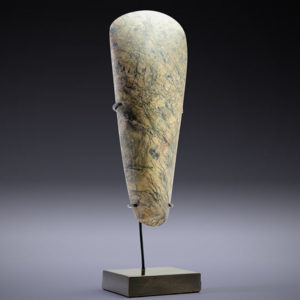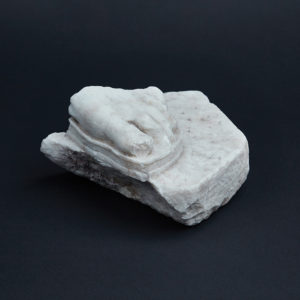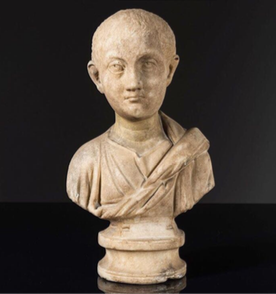In the foreground, is the bust of Herakles crowned with ivy and covered by leonte on his shoulders. Omphale standing behind Herakles. Both are facing left.
Omphale was a queen of Greek mythology, but Omphale was not a queen of Greece.
Omphale comes to the fore in Greek mythology when she buys Heracles as a slave for three silver talents, a not insignificant sum of money.
Heracles had killed Iphitus (an Oechalian prince and one of the Argonauts) in a fit of madness, and when Hippocoon (a Spartan king) refused to cleanse him of this crime, Heracles went to an Oracle, who told him he must be sold as a slave, and the fee paid in recompense to the father of Iphitus, Eurytus.
Now being a slave would be a humiliation for Heracles, but it was made worse by being a slave to a woman, and a barbarian woman at that, for Lydia was considered a barbarous nation.
During this period of servitude, which was said to last three years, Heracles undertook minor labours, in a similar way to his period of servitude to Eurystheus.
Further humiliation was also said to have been placed upon Heracles by the fact that some writers have Omphale and Heracles swapping clothes; with Heracles having to undertake chores in feminine attire.
Mistress and slave though would become lovers, and Omphale would become the second wife of Heracles. In the post wedding celebrations Heracles was almost raped by the god Pan, for the god mistook Heracles for Omphale.
Omphale would become mother to at least two sons of Heracles.
The impression is very intense blue glass, covered with a thin gilding, and to be considered ancient and taken from the original; also perfectly appears the raised border which very closely surrounds the two busts (“around the same blue layer”).
Both on the reverse and on the recto of the impression are visible signs of ancient wear and patina deposits.
The very fine Roman cameo in onyx, from which this cast impression was formerly drawn, belongs to the Medicea collection of Florence (inv. N. 14498) and was already described in the inventories in 1736 (table XXVIII, 10), and later in 1786 under the n. 1455 as “Onice. Due teste sovrapposte rappresentanti Ercole coronato d’Ellera e Onfale”.
In 1799 was the cameo described as “Onyx. Two busts jugati, one of Hercules bearded with the crown of ellera and the skin of lion on the shoulders, the other of Omphale.
The stone is highly valuable for the subtlety of the execution and for the different layers that compose it, since the beard, the hair, the crown and the skin of Hercules are in a sardonic colour that is a little different from the bottom, the remainder of a white tending to blue “.
The cameo is also reproduced in Zannoni (Cammei and Intagli, s. V, table 43, 4) and is present in the repertoire of plaster cast impressions Cades (III A, n. 63) and of the Barsanti factory.
For further information: Antonio Giuliano, I Cammei from the Medici Collection of the Archaeological Museum of Florence, p. 189 n. 81. 1st-2nd century AD.
CONDITION: In an excellent condition.
ORIGIN: France

